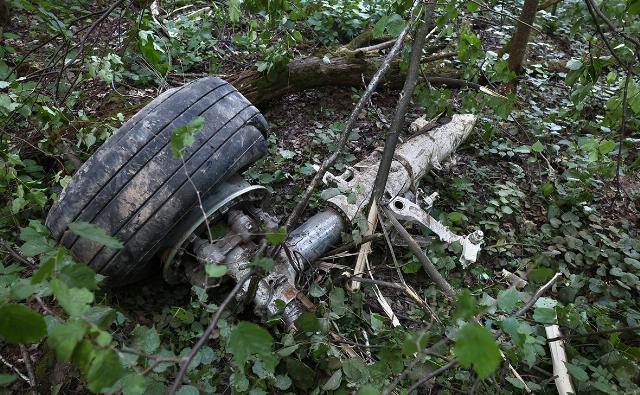The crew of the SSJ100, which crashed in the Moscow region, switched the aircraft to manual control mode a few minutes before the collision with the ground, gained altitude, but could not prevent the fall. Automation could interfere with the crew
The crew of the SSJ100, which crashed in the Moscow region on July 12, switched to manual control of the aircraft a few minutes before the crash, but could not save it, the Interstate Aviation Committee (IAC), which is investigating the incident, said in a statement .
The plane was flying from the Lukhovitsy airfield in the Moscow region to the Vnukovo airfield after a periodic form of maintenance by a branch of PJSC UAC - LAZ. Voronina. The crew consisted of three people - the commander of the aircraft, the co-pilot and the flight attendant.
"In the fifth minute of flight, from an almost horizontal position at an altitude of 5,160 feet (1,572 m, the pitch angle values were 5-6 degrees for crouching, the registered angles of attack were 10-11 degrees), the aircraft switched to a decrease from a pitch angle to 4 degrees for diving. At the time of the transition to a decrease, the instrument speed was 200 knots and increased, there was a synchronous cleaning of the flaps and slats to a fully retracted position," the IAC said in a statement. The autopilot was activated after takeoff at an altitude of 550 feet (167.6 m).
The crash site of the Sukhoi Superjet 100 was removed from a helicopter
Until the fifth minute, the plane was gaining altitude on autopilot, after cleaning the mechanization, the aircraft under autopilot control went into decline, Oleg Panteleev, Executive director of Aviport, draws attention.
"During the descent, the autopilot and automatic traction control were disabled. The crew switched to manual control of the side control knob (BRU) and the engines. The descent continued to an altitude of 4,500 feet (1,371 m), followed by a climb of 4,750 feet (1,447 m). At the sixth minute of the flight at a speed of 320 knots (the OVERSPEED sound alarm was working), the aircraft switched to a decrease with an increase in the pitch angle for a dive. It was not possible to stop the descent by a complete deviation of the BRU crew in pitch," the IAC said in a statement.
This means that after switching to manual control, the crew managed to briefly climb. But, despite the complete deviation of the handle towards itself, the aircraft was still dragged into a dive, says Oleg Panteleev.
"The picture of the incident has become clearer, but it is unclear from the published information in which mode the control system was operating. In the "normal manual Mode", false readings of the angle of attack sensors could lead to the fact that the automation blocked completely correct control actions of the crew. In the "direct manual Mode", when all protective algorithms are disabled, the effect of taking the handle "completely on itself" should have manifested itself, although perhaps at that moment the aircraft was already in a mode from which it could no longer be withdrawn," the expert notes.
Earlier, an RBC source in the aviation industry said that one of the versions of the crash that the investigation is working on is incorrectly installed angle of attack sensors positioning the aircraft in space. "If an error is made during installation, they transmit incorrect data to the control system. Figuratively speaking, electronics can assume that the plane is on the rise when it flies towards the ground," explained the interlocutor of RBC. At the moment, this is the main version of the investigation.
The plane crashed near the village of Apraksino, south of Moscow. All three crew members were killed in the crash.
:Herman Kostrinski


